Renault’s powertrain tech company, HORSE, has begun mass-producing the Power Electronics Box (PEB); crucial for HEVs and PHEVs. The redesigned PEB boosts performance by managing Emotors more efficiently. Here’s CEO, Patrice Haettel on electrification and more.
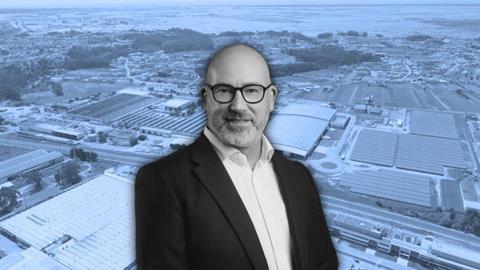
Just last month, Renault subsidiary and powertrain technology company, HORSE, announced that it had begun production of its Power Electronics Box (PEB) at its Aveiro plant, in Portugal.
With the many false starts, slowdowns, uncertainties and bumps along the lengthening road to electrification across several regions, finding the right solution to enable the transition is key. To this end, Renault’s powertrain arm has set on the mass manufacture of this low-emissions system; a crucial component for hybrid vehicles, with a PEB that manages the two electric motors in both hybrid electric vehicles (HEVs) and plug-in hybrids (PHEVs). HORSE has said the redesigned PEB integrates multiple critical structures into a single, robust and reliable unit, streamlining components and enhancing overall performance.
We sat down with HORSE’s CEO, Patrice Haettel, to find out more about powertrain technologies, flexible production, sustainability, data, digitalisation, regional variations, partnerships, R&D, Cobots, and the general global state of play when it comes to electrification…
Firstly, could you provide more details about the decision to start production of the Power Electronics Box (PEB) in Aveiro, Portugal? What factors would you say influenced this decision, and what advantages does Aveiro offer for manufacturing electronic components compared to other locations?
Choosing the Aveiro plant for the production of Power Electronics Boxes (PEB) was a natural decision. Firstly, the plant has a rich history in manufacturing components for the automotive industry, dating back to 1981. This legacy means that the plant already had some of the most skilled engineers and technicians in the region, and it’s equipped with the necessary infrastructure to support PEB production.
Secondly, as the automotive sector shifts towards greater electrification and hybridisation, so does the balance of our production. Aveiro’s manufacturing mix previously included some older technologies and components that were reaching the end of their lifecycle, making it the natural choice to ensure we retained overall production at such a high pace.
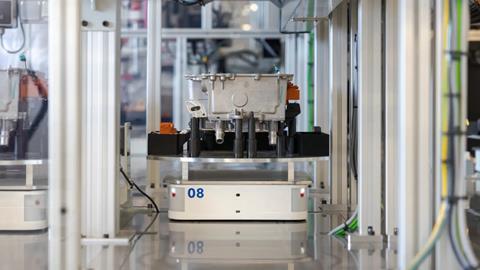
Additionally, Aveiro also has a strategic geographical position, currently exporting to eight countries across three continents; its location is a key enabler for its success. Its position on the Iberian Peninsula allows us the possibility to produce and develop the entire powertrain (engine, gearbox, power electronics, and batteries) in the same territory, giving us a competitive advantage as well as an opportunity to offer tailored service to other manufacturers and sectors.
The PEB integrates several critical systems into a single unit. How does this redesigned component enhance the performance and efficiency of hybrid vehicle powertrains, particularly in terms of managing electric motors and power distribution?
Our PEB has been redesigned with fewer cable harnesses with the goal of increasing robustness and reliability. What this means is that it integrates several critical systems into a single unit: power inversion, conversion, control, and cooling. So we have also reduced the size of the box, allowing a more compact unit to fit more flexibly into hybrid vehicles.
”We work with a clear Data-Centric mindset, convinced that good data and its proper use, besides being advantageous, are fundamental to being more efficient and profitable” - Patrice Haettel, CEO of HORSE
The PEB is an important component in the value chain of hybrid vehicle powertrains and is responsible for managing the two electric motors in hybrid (HEV) and plug-in hybrid (PHEV) systems. Since the PEB is a compact solution, it also brings higher energy efficiency - which is ultimately a goal for all hybrid vehicles as we seek to maximise fuel and energy performance.
It’s important to note that we’re is a company developing technologies for a more responsible future mobility, so sustainability is at the core of our entire strategy. But we believe that there is no ’one-size-fits-all’ solution to sustainable mobility, and so we’re investing in technologies that’ll support the automotive industry - as well as other sectors - requiring power generation in their transition to a sustainable future.
The new assembly line at Aveiro utilises advanced technology for full digitalisation and innovation, including autonomous geolocation-powered platforms and real-time monitoring. Talk to us about digitalisation, flexibility and the scaling up of the new assembly line?
HORSE is a technology company with a clear commitment to innovation. In recent years, we’ve adapted our processes, systems and factories to be at the forefront of new technologies. We work with a clear Data-Centric mindset, convinced that good data and its proper use, besides being advantageous, are fundamental to being more efficient and profitable. The key lies in having good data and interpreting it correctly for efficient decision-making. For example, an engine generates 1.5 gigabytes of data: using that data - we can establish predictive models, mitigate potential risks and actuallly optimise our organisation.
Innovation is, of course, something which exists throughout the entire chain and all our processes. For example we recently announced the installation of our innovative assembly line “Matrix Flow”, which, instead of traditional conveyor belts, uses a fleet of 30 Mobile Programmable Cobots (MPCs) to move parts, tools and finished products between workstations.
With Matrix Flow, tasks can be dynamically assigned to available workstations, and the MPCs can be reassigned based on demand fluctuations all thanks to extensive autonomous digital floor monitoring. This agility optimises resource allocation and improves overall efficiency, allowing us to quickly adapt to changing production needs.
HORSE has recently announced a deal to supply diesel engine to HABAŞ
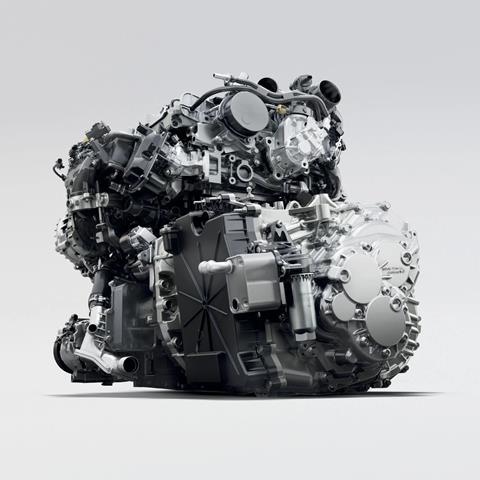
When it comes to powertrains, HORSE seeks to run a wide gamut. The company recently announced it has secured a multi-year agreement to supply its advanced diesel engines to Turkish automotive manufacturer, HABAŞ. The deal marks HORSE’s expansion into new international markets following its successful ventures in South America.
Under the agreement, HORSE will provide its M920 RWD 2.0-litre turbo diesel engines for HABAŞ’s upcoming Light Commercial Vehicles, with the engines set to be integrated into vehicles produced at HABAŞ’s new facility in Manisa, Türkiye.
The 2.0-litre four-cylinder engine delivers 170PS (125kW) at 3,500rpm, with a peak torque of 380Nm at 1,500rpm. Key features include a common rail injection system operating at 2,500bar for precise fuel delivery, and a variable vane turbine turbocharger for responsive performance at all speeds.
Meeting the stringent Euro 6d+e emissions standards, the M920 RWD engine is suitable for European markets and supports B10 diesel with 10% biofuel content, and will help to contribute towards a lower carbon footprint.
With production expected to reach 230,000 units per annum by 2025, how does HORSE plan to scale up manufacturing capabilities at the Aveiro facility?
Our new Matrix Flow production line currently has 30 MPCs, which effectively act as mobile workstations. However, this is not the full capacity of the line; we can introduce new MPCs into the existing line, increasing production.
The new approach reduces the physical footprint of the assembly line on the factory floor by 25% and the size within the building overall by 30%. This potentially allows us to use the space that has been freed up to introduce new lines in the future. Additionally, an interesting fact is that with this production line, energy usage on site is reduced by 50%.
”Internal combustion engines (ICE) and hybrids are expected to remain significant players in the automotive industry for many years. Our long-term projections suggest that by 2040, over 50% of passenger and light commercial vehicles globally will still rely on these technologies” - Patrice Haettel, CEO of HORSE
HORSE has invested in future-looking digital training for staff at Aveiro, including training for ESD safe environments and virtual reality simulations. How do these training programs contribute to ensuring quality and safety in PEB production?
Training and investment in the continuous improvement of our professionals is a global commitment at HORSE. To stay at the forefront of what we do, we have to equip them with the necessary tools to enhance their work. Virtual reality is among the tools we are working on integrating into our production processes as well as conventional training programs. We aim to prepare the team for their roles and any situations they could face on the production line. When new processes are introduced, it usually takes some time to adapt; however, by doing this beforehand using virtual reality, we eliminate a series of potential problems before production begins.
This is training that is relevant not only for today but for the years to come, especially when considering future innovation in manufacturing.
In the case of Matrix Flow, we have created a clean, sterile environment that is insulated against electrostatic discharges (ESD). This is crucial for the future production of impeccable and high-tech electric powertrains, ensuring the quality of the products and the safety of the personnel. The PEB is a vital component of the hybrid vehicle, so it is necessary to manufacture it correctly the first time, every time.
Could you discuss any sustainability initiatives implemented at the Aveiro plant to reduce its carbon footprint? How does HORSE prioritise sustainability in its manufacturing processes and operations?
Sustainability is ingrained in every aspect of our operations. We hold a dual commitment to both people and the planet, prioritising decarbonisation and offering solutions that support the energy transition. And sustainability lies at the strategic core of HORSE because our primary objective is to deliver tangible solutions for decarbonisation. Aveiro, like all HORSE plants, sources a significant portion of its electricity from renewable sources. This ensures that our carbon footprint remains as low as possible.
“While Europe may be adopting hybrids, South America is adopting alternative fuels due to travel distances and lack of infrastructure” - Patrice Haettel, CEO of HORSE
Furthermore, we’ve set ambitious ESG goals and established a roadmap to significantly reduce our carbon footprint across our processes and in our already low-emission products. This aligns with our commitment to the well-being of the people and communities in which we operate. We have a clear mission: to offer mobility solutions that are responsible, sustainable, and facilitate the energy transition for as many people as possible.
Could you provide insights into the company’s R&D efforts in developing innovative powertrain solutions, especially in the context of emerging trends in the automotive industry?
A central pillar of our mission is the recognition that achieving decarbonisation requires a region-by region tailored approach, rather than a one-size-fits-all solution. That’s why we are looking to facilitate the use of alternative fuels in vehicles, as well as hybrid powertrains, as different regions have their own energy mixes and unique supply chains. Ultimately, energy generation solutions for South America are not the same as those for Europe.
Internal combustion engines (ICE) and hybrids are expected to remain significant players in the automotive industry for many years. Our long-term projections suggest that by 2040, over 50% of passenger and light commercial vehicles globally will still rely on these technologies. As a result, much of our research focuses on minimising emissions and maximising the performance of ICEs and hybrids.
If we look at Europe, legislation is heading in a very electric vehicle-oriented direction; however, it is consumer demand that ultimately drives its pace. Market trends reveal a persistent demand for internal combustion engine vehicles. For example, in March, hybrid registrations increased by 12.6%, while battery electric vehicle registrations decreased by 11.3% in the same period.
”I want people who have an entrepreneurial mindset, with the regional experience of team members feeding our global team” - Patrice Haettel, CEO of HORSE
At HORSE we are committed to reaching decarbonisation. One thing that remains for debate is how we get there. Rather than viewing this transition as a race between different solutions, we should see it as a joint effort by these solutions to create new paths towards more sustainable futures, and to power tomorrow. We must therefore not entirely dismiss any technology that is environmentally responsible and supports future sustainable mobility.
We are also responsible for product quality from start to finish - from design to production. To ensure quality, we have a robust set of pillars in place. We’ve also established a global quality division with regional departments to share ideas and best practices, comprised of the best engineers from around the world.
What would you say are the key challenges and opportunities the company faces in the competitive automotive market? How does it differentiate itself from competitors?
We’re unique in what we offer, and our technology has a wide range of automotive and industrial applications. Additionally, our global presence, with facilities in Europe, South America, and Asia, gives us a unique insight into local trends and requirements, allowing us to offer products that meet the needs of customers in a way that most tier one suppliers cannot. The transition to electrified vehicles, as well as powertrains with alternative fuels, presents a fundamental challenge for suppliers. The relationship between OEMs and the supply chain has never been more critical; both must collaborate to create technology that meets the needs of car manufacturers, exceeds consumer expectations, and remains competitive in price.
If we can consolidate these working relationships, the sky’s the limit for innovation and consumer choice.
Finally, could you provide an overview of your long-term vision and strategic goals going forward? How would you say you differentiate yourself from the competition?
Our main goal is to help deliver the necessary technologies to drive global decarbonisation. Everyone is heading in the same direction, but at different speeds. While Europe may be adopting hybrids, South America is adopting alternative fuels due to travel distances and lack of infrastructure.
If we continue with this strategy of responding to regional needs, rather than a one-size-fits-all approach, I am confident that we will succeed as a company. We’re acting with a scaling mindset, and our culture can be our differentiator. I want people who have an entrepreneurial mindset, with the regional experience of team members feeding our global team, and enabling quick decisions that’ll allow us to stay ahead of the competition.
Topics
- Automation and Digitalisation
- Battery recycling
- Battery System and Pack Production
- Design for Manufacturing
- Electrification
- Europe
- EV component manufacturing
- Expansion
- Factory Investment
- Kaizen
- Manufacturing engineering
- Materials
- OEMs
- Plant Functions
- Powertrain
- Quality
- Recycling
- Regions
- Renault
- Renewables
- Suppliers
- Sustainable production
- Sustainable strategies
- Systems





























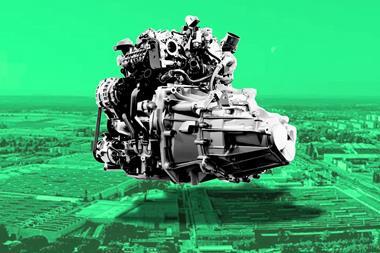

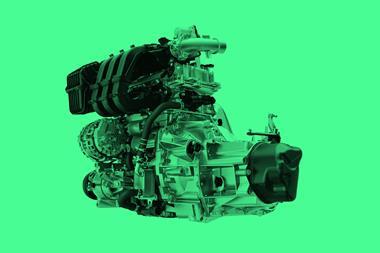
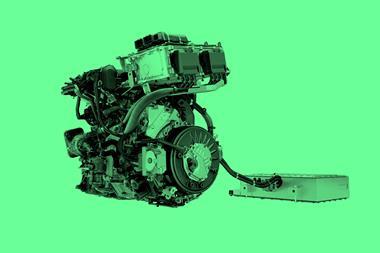
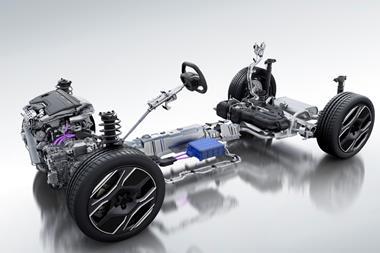
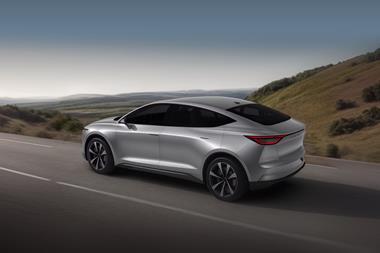



No comments yet